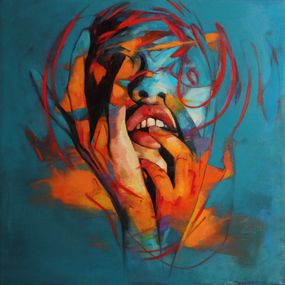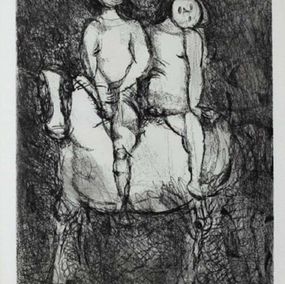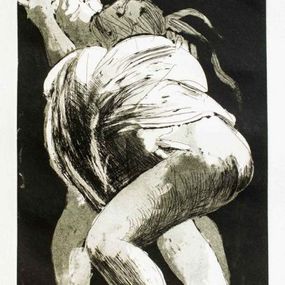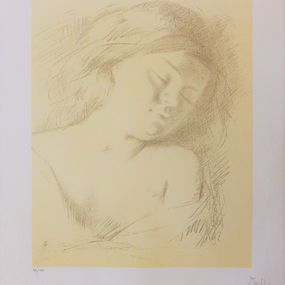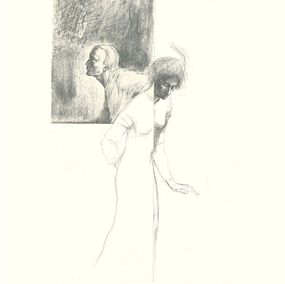
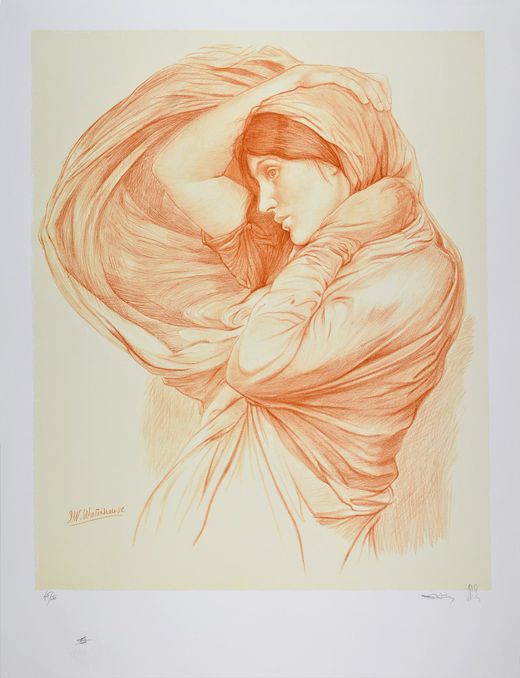
United Kingdom
• 1849
- 1917
Women are timeless muses.
Biography
John William Waterhouse was an English Painter of the Victorian Age. He is considered one of the great master of the neoclassical, pre-raphaelite and symbolist English movement.
John William Waterhouse was born in 1849 in Rome, where his father worked as a painter. He was referred to as "Nino" throughout his life. In the 1850s the family returned to England. Before entering the Royal Academy schools in 1870, Waterhouse assisted his father in his studio. His early works were of classical themes in the spirit of Sir Lawrence Alma-Tadema and Frederic Leighton, and were exhibited at the Royal Academy, the Society of British Artists and the Dudley Gallery. In the late 1870s and the 1880s, Waterhouse made several trips to Italy, where he painted genre scenes. After his marriage in 1883 to Esther Kenworthy, Waterhouse took up residence at the Primrose Hill Studios.
His latter painting reveals Waterhouse's growing interest in themes associated with the Pre-Raphaelites, particularly tragic or powerful femmes fatales, as well as plein-air painting. Other examples of paintings depicting a femme fatale are Circe Invidiosa, Cleopatra, La Belle Dame Sans Merci and several versions of Lamia. In 1885 Waterhouse was elected an associate of the Royal Academy and a full member in 1895.
Despite suffering from increasing frailty during the final decade of his life, Waterhouse continued painting until his death from cancer in 1917. From 1908-1914 he painted a series of paintings based upon the Persephone legend. They were followed by pictures based upon literature and mythology in 1916 (Miranda, Tristram and Isolde). One of his final works was The Enchanted Garden, left unfinished on his easel at his death, and now in the collection of the Lady Lever Art Gallery in Liverpool.
Read more
John William Waterhouse was born in 1849 in Rome, where his father worked as a painter. He was referred to as "Nino" throughout his life. In the 1850s the family returned to England. Before entering the Royal Academy schools in 1870, Waterhouse assisted his father in his studio. His early works were of classical themes in the spirit of Sir Lawrence Alma-Tadema and Frederic Leighton, and were exhibited at the Royal Academy, the Society of British Artists and the Dudley Gallery. In the late 1870s and the 1880s, Waterhouse made several trips to Italy, where he painted genre scenes. After his marriage in 1883 to Esther Kenworthy, Waterhouse took up residence at the Primrose Hill Studios.
His latter painting reveals Waterhouse's growing interest in themes associated with the Pre-Raphaelites, particularly tragic or powerful femmes fatales, as well as plein-air painting. Other examples of paintings depicting a femme fatale are Circe Invidiosa, Cleopatra, La Belle Dame Sans Merci and several versions of Lamia. In 1885 Waterhouse was elected an associate of the Royal Academy and a full member in 1895.
Despite suffering from increasing frailty during the final decade of his life, Waterhouse continued painting until his death from cancer in 1917. From 1908-1914 he painted a series of paintings based upon the Persephone legend. They were followed by pictures based upon literature and mythology in 1916 (Miranda, Tristram and Isolde). One of his final works was The Enchanted Garden, left unfinished on his easel at his death, and now in the collection of the Lady Lever Art Gallery in Liverpool.
Discover the movements linked to John William Waterhouse
Discover similar artists
Discover our selections of works by artists
Need help finding your favorite? Consult our selection pages made for you.
Need to know more?
What are their 3 main works?
When was John William Waterhouse born?
The year of birth of the artist is: 1849






